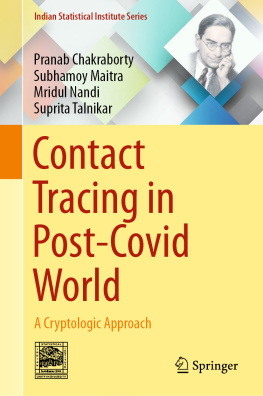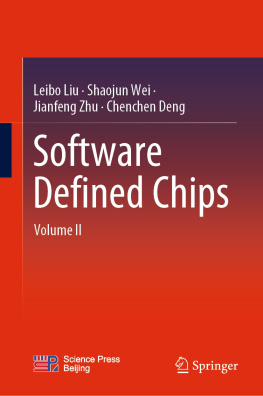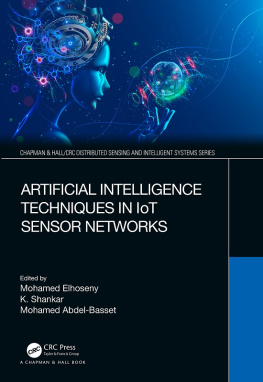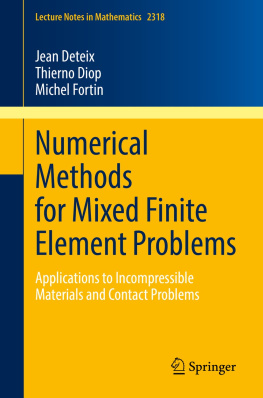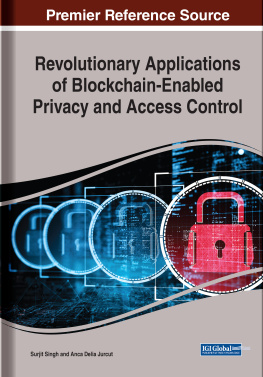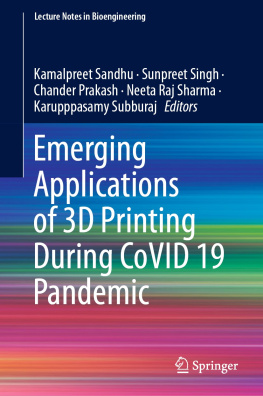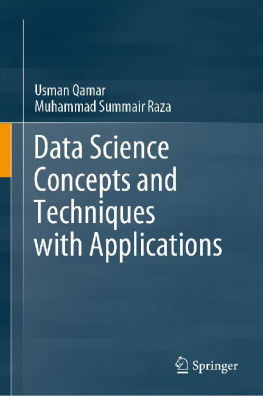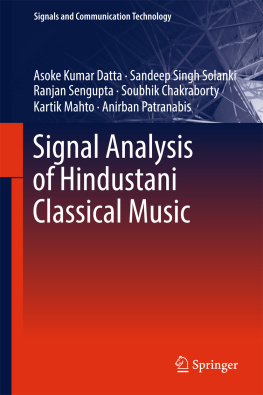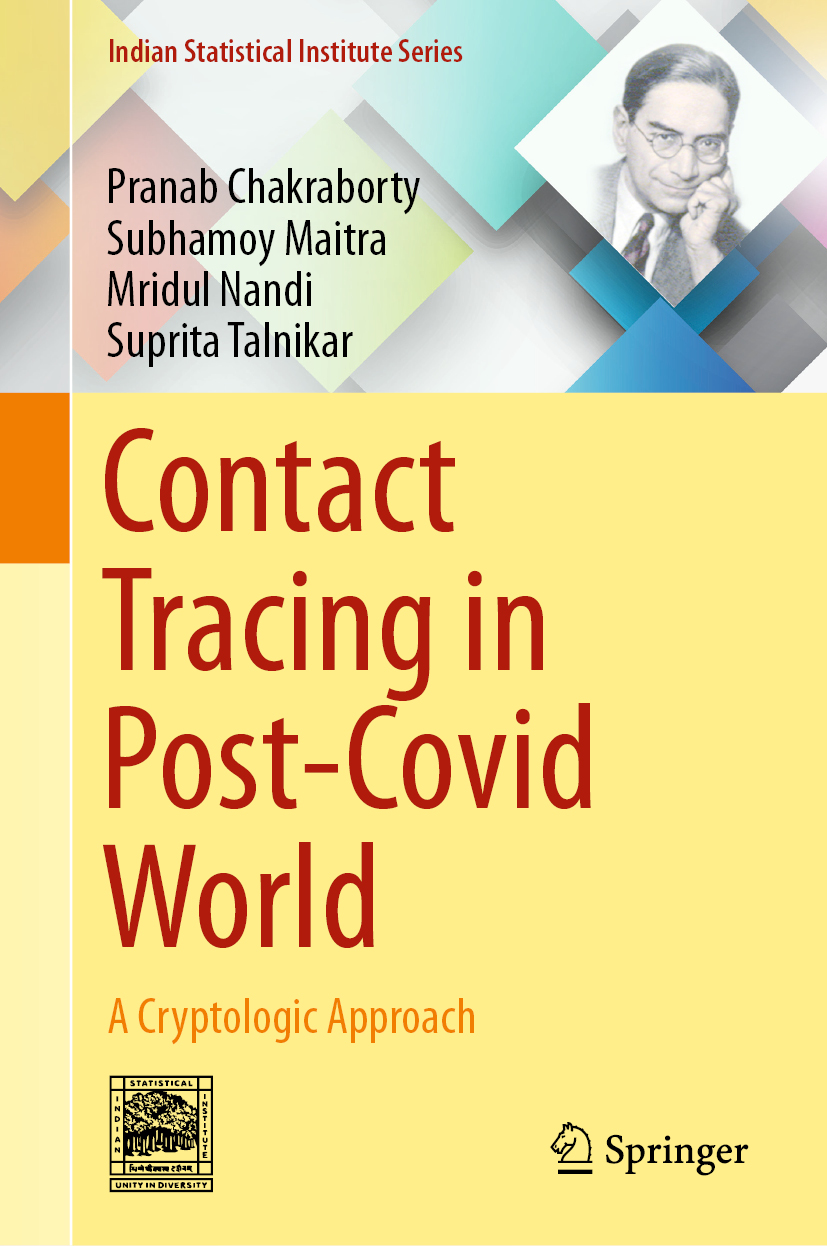Indian Statistical Institute Series
Editors-in-Chief
Ayanendranath Basu
Indian Statistical Institute, Kolkata, India
B. V. Rajarama Bhat
Indian Statistical Institute, Bengaluru, India
Abhay G. Bhatt
Indian Statistical Institute, New Delhi, India
Joydeb Chattopadhyay
Indian Statistical Institute, Kolkata, India
S. Ponnusamy
Indian Institute of Technology Madras, Chennai, India
Associate Editors
Atanu Biswas
Indian Statistical Institute, Kolkata, India
Arijit Chaudhuri
Indian Statistical Institute, Kolkata, India
B. S. Daya Sagar
Indian Statistical Institute, Bengaluru, India
Mohan Delampady
Indian Statistical Institute, Bengaluru, India
Ashish Ghosh
Indian Statistical Institute, Kolkata, India
S. K. Neogy
Indian Statistical Institute, New Delhi, India
C. R. E. Raja
Indian Statistical Institute, Bengaluru, India
T. S. S. R. K. Rao
Indian Statistical Institute, Bengaluru, India
Rituparna Sen
Indian Statistical Institute, Chennai, India
B. Sury
Indian Statistical Institute, Bengaluru, India
The The Indian Statistical InstituteSeries publishes high-quality content in the domain of mathematical sciences, bio-mathematics, financial mathematics, pure and applied mathematics, operations research, applied statistics and computer science and applications with primary focus on mathematics and statistics. Editorial board comprises of active researchers from major centres of Indian Statistical Institute. Launched at the 125th birth Anniversary of P.C. Mahalanobis, the series will publish high-quality content in the form of textbooks, monographs, lecture notes and contributed volumes. Literature in this series are peer-reviewed by global experts in their respective fields, and will appeal to a wide audience of students, researchers, educators, and professionals across mathematics, statistics and computer science disciplines.
More information about this series at Series http://www.springer.com/series/15910 publishes high-quality content in the domain of mathematical sciences, bio-mathematics, financial mathematics, pure and applied mathematics, operations research, applied statistics and computer science and applications with primary focus on mathematics and statistics. Editorial board comprises of active researchers from major centres of Indian Statistical Institute. Launched at the 125th birth Anniversary of P.C. Mahalanobis, the series will publish high-quality content in the form of textbooks, monographs, lecture notes and contributed volumes. Literature in this series are peer-reviewed by global experts in their respective fields, and will appeal to a wide audience of students, researchers, educators, and professionals across mathematics, statistics and computer science disciplines.
Pranab Chakraborty , Subhamoy Maitra , Mridul Nandi and Suprita Talnikar
Contact Tracing in Post-Covid World
A Cryptologic Approach
1st ed. 2020
Pranab Chakraborty
Learning and Development, Wipro Limited, Bengaluru, Karnataka, India
Subhamoy Maitra
Applied Statistics Unit, Indian Statistical Institute, Kolkata, West Bengal, India
Mridul Nandi
Applied Statistics Unit, Indian Statistical Institute, Kolkata, West Bengal, India
Suprita Talnikar
Applied Statistics Unit, Indian Statistical Institute, Kolkata, West Bengal, India
ISSN 2523-3114 e-ISSN 2523-3122
Indian Statistical Institute Series
ISBN 978-981-15-9726-8 e-ISBN 978-981-15-9727-5
https://doi.org/10.1007/978-981-15-9727-5
Mathematics Subject Classication (2010): 94A60 68P25 06E30 94C10
The Editor(s) (if applicable) and The Author(s), under exclusive license to Springer Nature Singapore Pte Ltd. 2020
This work is subject to copyright. All rights are solely and exclusively licensed by the Publisher, whether the whole or part of the material is concerned, specifically the rights of translation, reprinting, reuse of illustrations, recitation, broadcasting, reproduction on microfilms or in any other physical way, and transmission or information storage and retrieval, electronic adaptation, computer software, or by similar or dissimilar methodology now known or hereafter developed.
The use of general descriptive names, registered names, trademarks, service marks, etc. in this publication does not imply, even in the absence of a specific statement, that such names are exempt from the relevant protective laws and regulations and therefore free for general use.
The publisher, the authors and the editors are safe to assume that the advice and information in this book are believed to be true and accurate at the date of publication. Neither the publisher nor the authors or the editors give a warranty, expressed or implied, with respect to the material contained herein or for any errors or omissions that may have been made. The publisher remains neutral with regard to jurisdictional claims in published maps and institutional affiliations.
This Springer imprint is published by the registered company Springer Nature Singapore Pte Ltd.
The registered company address is: 152 Beach Road, #21-01/04 Gateway East, Singapore 189721, Singapore
To our colleagues in health sectors,
who are dedicating their lives to save us all.
Preface
We live in an age where exponential possibilities and shifting sands of uncertainties constantly redefine the new normal. This time, its COVID-19 that is controlling the playing field. Optimists will hope for a post-Covid world, while the rest, perhaps, will settle down to live with it for a long time, if not forever.
Given the pandemic nature of the infection and the high mortality rate associated with it, the world is facing an unprecedented challenge of tackling the disease at scale. On one hand, the people who are suffering from COVID-19 must have the best possible medical care and treatment, on the other hand, it is of utmost importance to ensure that the least number of uninfected people should come in close contact with the ones who are infectious. Moreover, an asymptomatic person may never know that he/she is infected (and possibly infectious), unless he/she is tested. At the same time, if it is known that a person is infected, then non-infected persons (other than the immediate family members and healthcare professionals) should be kept away from the infected person. It should be feasible to achieve this through the mobile phone network, software systems and tools and appropriate policies, processes and assumptions. The communication among the neighboring mobile phones can be achieved through the bluetooth protocol, while the location and other relevant information may be transmitted to some centralized authority through the mobile network.
Here, we assume that in the majority of circumstances, a person would choose to inform in case he/she is infected or in case he/she feels that he/she might have passed the infection to someone else. The other assumption is the trust of the community on the government and/or central administrative agencies so that the personally identifiable information of an individual (whether infected or not) does not get compromised or breached. It is known that the issue of individual privacy receives more attention in certain countries than in others. Thus, political and social issues may play a dominant role in deciding how an application related to contact tracing should be designed. From a practical point of view, manual contact tracing may still remain as one of the most effective options to limit the spread of the infection. However, with remarkable development in computation and communication, it is only natural that the world will eventually move towards digital systems to handle such a global pandemic.

